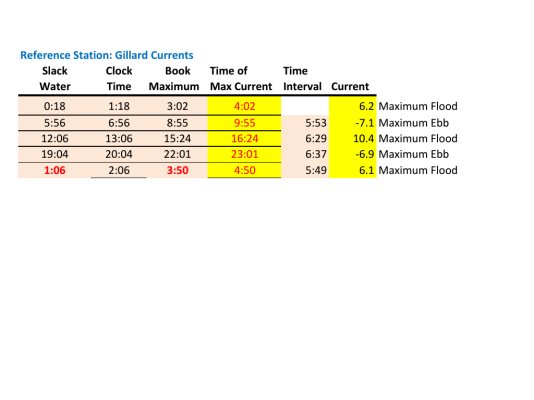JDCAVE
Guru
- Joined
- Apr 3, 2011
- Messages
- 2,905
- Location
- Canada
- Vessel Name
- Phoenix Hunter
- Vessel Make
- Kadey Krogen 42 (1985)
This has been an interesting exercise. While there undoubtedly are other calculators out there that are more convenient, and perhaps more accurate, they aren't helpful for me to understand the underlying problems of understanding tides. Furthermore the inherent assumptions in these methods are not well documented and there are probably common errors that are propagated between the "Apps".
Clearly many processes affect tidal currents. Rich Thomson (Institute of Ocean Sciences, Patricia Bay) points out that Juan de Fuca and Johnstone Straits as well as the waters on the outside of Vancouver Island are one big extension of the Fraser River. Also some of the other local rivers influence tidal currents as well as winds. However, even just looking at the tide tables, there is considerable asymmetry in the predictions, that provide challenges when you attempt to model currents with a small time-step. I believe the biggest problem is when you attempt to estimate the secondary current stations, as they just ARE NOT, scalable from the Reference Stations, because the parameters are not symmetric for the ebb and flood currents.
These are the results of the model for the 3 rapids (Dents, Gillards and Yucultas) that boaters take through Cordero Channel. The goal is to take these three rapids in one go if you can, which means timing of slack water is critical.
Note that slack water is the time period that we are interested in. However it is also the period that is the most difficult to model because the "rate-of-change" of the current is greatest at these periods. The estimated timing of slack water for all three passes are outcomes from the model.
I'm looking for feedback from people who are interested in looking at the worksheet.
The CHS Reference and Secondary Stations:

Parameterization of the Gillard Passage for June 5, 2015 from CHS Tide and Current tables.

Calculation of Secondary Stations for June 5, 2015 from Gillard Passage Reference Station.

Graph of modelled time series, 28 hours.

Graph of zoomed in period, Mid day.

Jim
Sent from my iPad using Trawler Forum
Clearly many processes affect tidal currents. Rich Thomson (Institute of Ocean Sciences, Patricia Bay) points out that Juan de Fuca and Johnstone Straits as well as the waters on the outside of Vancouver Island are one big extension of the Fraser River. Also some of the other local rivers influence tidal currents as well as winds. However, even just looking at the tide tables, there is considerable asymmetry in the predictions, that provide challenges when you attempt to model currents with a small time-step. I believe the biggest problem is when you attempt to estimate the secondary current stations, as they just ARE NOT, scalable from the Reference Stations, because the parameters are not symmetric for the ebb and flood currents.
These are the results of the model for the 3 rapids (Dents, Gillards and Yucultas) that boaters take through Cordero Channel. The goal is to take these three rapids in one go if you can, which means timing of slack water is critical.
Note that slack water is the time period that we are interested in. However it is also the period that is the most difficult to model because the "rate-of-change" of the current is greatest at these periods. The estimated timing of slack water for all three passes are outcomes from the model.
I'm looking for feedback from people who are interested in looking at the worksheet.
The CHS Reference and Secondary Stations:

Parameterization of the Gillard Passage for June 5, 2015 from CHS Tide and Current tables.

Calculation of Secondary Stations for June 5, 2015 from Gillard Passage Reference Station.

Graph of modelled time series, 28 hours.

Graph of zoomed in period, Mid day.

Jim
Sent from my iPad using Trawler Forum
Last edited:



